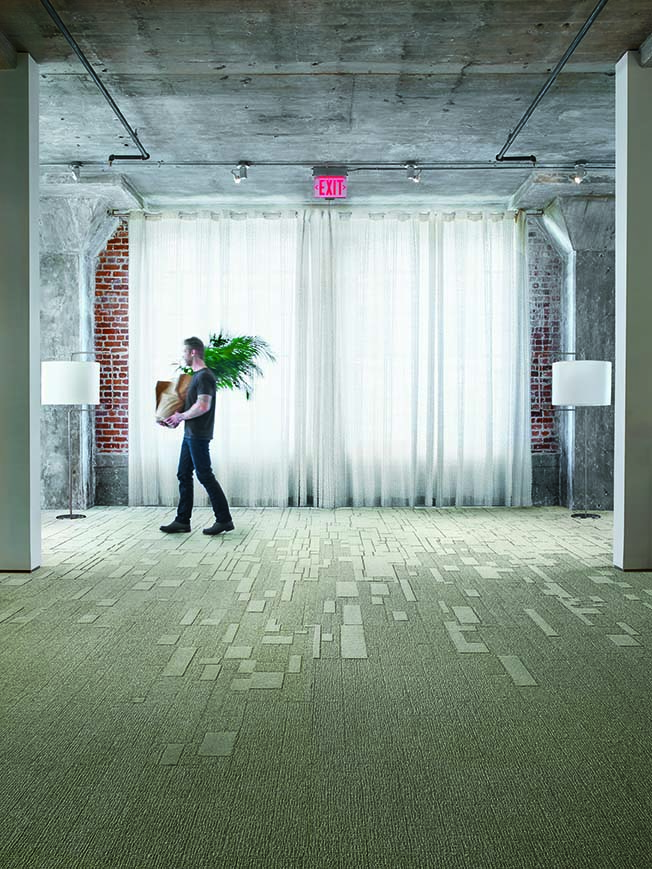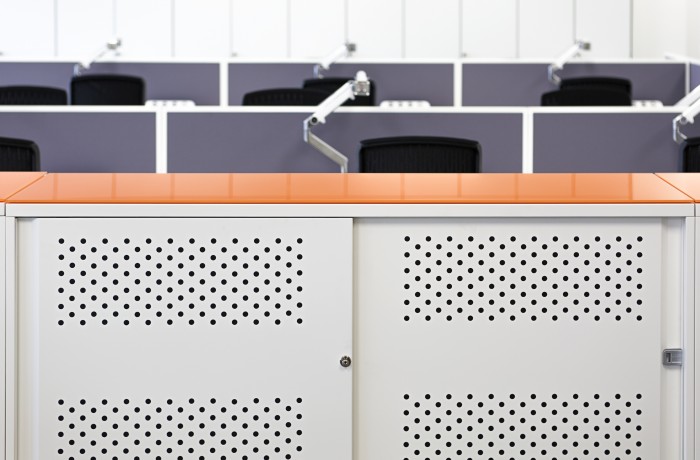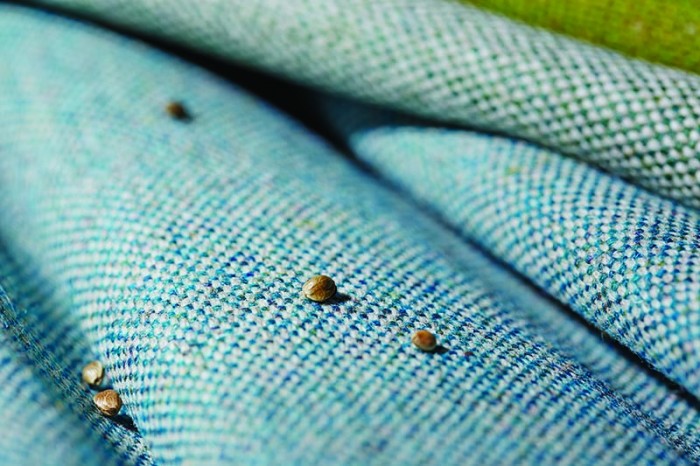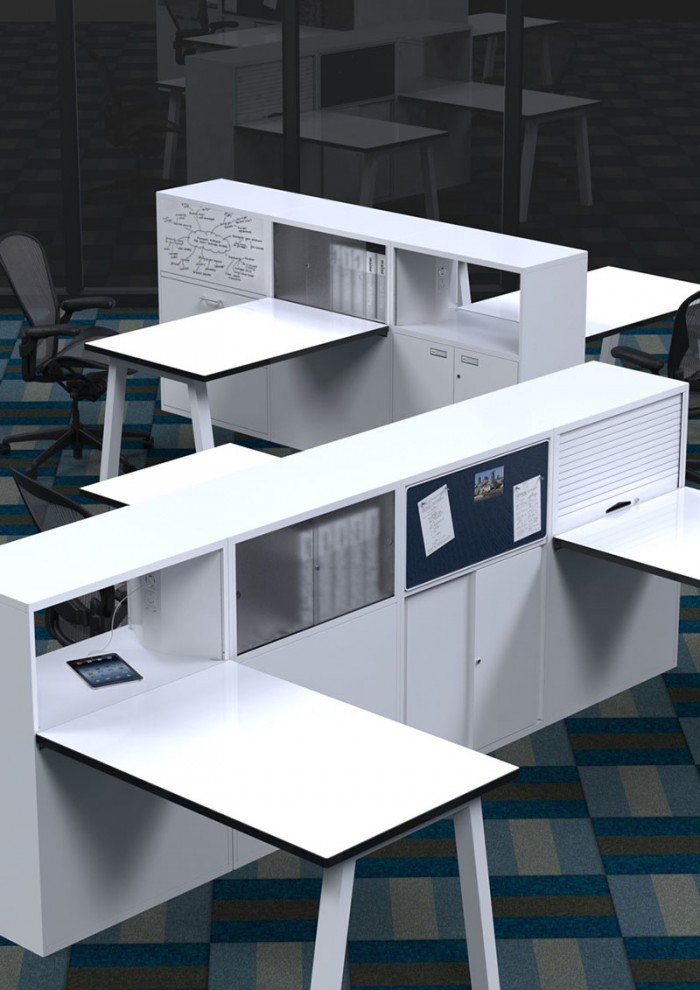The Office – Evolution or Revolution?
How we work has changed and so has our concept of the office.
Commercial office spaces are undergoing something of a transformation. Issues like wellness, collaborative working and technological mobility are all key factors driving this shift. Could greater thought on workplace design be the secret to business success? After all creating happier, healthier and ultimately a more productive work environment is what employers strive for.
The latest office statistics from the BCFA shows that the strengthening economy is having a positive impact on the office sector. The full report is available to all contributing companies* and gives a full breakdown of office furniture sales. This feature examines trends in the office environment, from floors to furniture and fabrics we see what BCFA members are predicting.

Karen Lambert, Marketing Director UK and Ireland for Interface flooring believes the way in which an office is designed can have a staggering impact on our emotional and physical well-being. Surrounded everyday by technology and a landscape of concrete and mortar, workers in urban settings are at risk of feeling stressed and disconnected from the natural world. Interface’s recent Human Spaces report revealed that employees who work in environments with natural elements experience higher levels of productivity and creativity which improves their wellbeing.
“….employees who work in environments with natural elements experience higher levels of productivity and creativity which improves their wellbeing.”
Increasing number of architects and designers are embracing biophillic design in the workplace in a bid to breathe life back into the urban office space. Based on the notion that humans are intrinsically connected to nature, biophillic design embraces and incorporates elements from the outside world. This approach is demonstrated in Equal Measure™, the latest collection from Interface, evoking the traditional feel of a cobblestone street.
Probably the most influential factor on how we work today is a result of mobile technology and how it has disconnected the need to sit at one workstation – making the office environment more mobile as a result. Morgan furniture see that office space is no longer an open plan area with endless rows of desking systems. It is becoming more varied with fewer “workstations” and more break out areas and informal meeting areas. People expect the modern office space to offer a hospitality feel where comfort and privacy are considered. Design Director, Katerina McMahon explains, ‘at Morgan we find more modular sofas and lounge chairs being specified, as well as small laptop side tables. Our Manhattan collection which offers a system of connecting high or low back sofas is popular, together with a mix of soft seating. Ergonomics and wellbeing are important especially as people spend longer hours at work. To be able to vary one’s seating posture from a desk chair, to a stool, to a low chair, to standing is the ideal according to back physiotherapists. In fact we should all have more meetings standing up, although we still need chairs!’
“To be able to vary one’s seating posture from a desk chair, to a stool, to a low chair, to standing is the ideal according to back physiotherapists”
But, creating a successful office scheme is more than instilling a hospitality ‘feel’. Camira fabrics see the lines blurring between fashion, domestic and commercial interior fabric trends, making the end user more comfortable with adventurous colour/texture/pattern combinations. Designers are becoming more creative and experimental in terms of mixing up colours and textures, patterns and plains, to make seating systems easier to refresh and reconfigure to give different looks.
The concept of workplace wellness has gained momentum in response to concerns over health and this has influenced innovations in both the design of furniture and finishes, with a greater preference for natural materials and fabrics with acoustic properties. Acoustics are ever more important as employees need quiet areas to disconnect and concentrate be it in breakout areas or acoustic “pods”.
Helen Blamires, Marketing Executive explains how Camira always look to nature for the best answers, ‘the experience we gained from developing our acclaimed Sting fabric from nettles blended with wool has led to an array of innovative and renewable bast-fibre fabrics from nettles, hemp, flax and jute. Our most recent launch Main Line Flax is re-engineered using environmentally sensitive flax fibre, extracted from the stem of the plant – it has strong, long and smooth fibres perfect for contract fabrics. Other natural innovations include Century which contains upcycled jute fibre from waste coffee sacks. This blend of wool and bast fibres delivers an inherently flame retardant fabric to higher level flammability standards without the need for any chemical treatment.’
The increased popularity of modular seating solutions allows a “mix and match” approach, so systems are easy to reconfigure for different uses. The Landscape Collection was designed by Camira as a fabric for flexible, collaborative workspaces that are more relaxed and informal – to fit with the advent of the so-called Third Space, possible because employees take their mobile device with them.
With the advancement of technology in the workplace, innovations in storage have needed to keep pace more than any other item of office furniture. Paper files are now archived rather than stored within expensive office space. Hanging files and paper storage near the desk is now replaced with powered, secure, storage of IT items such as phones, laptops and iPads, see the latest powered locker from Maine. Personal lockers are now an integral part of an office space, rather than just a coat locker hidden at the back. Everything is becoming streamlined and more efficient, so that even desk legs are unnecessary and can be replaced with an all in storage/desk such as Maineframe. Filing units are not the grey bulky units they used to be pushed to the back of a wall. They can be slim framed in a variety of colours and varied stylish tops. Storage has had a dramatic change in the last 10 years from a simple storage box, to becoming a stylish, innovative and instrumental part of a more dynamic and efficient workplace.
Advancements in technology has not just affected the communication devices we use in our office, it has also affected how materials are used. Glass in the office used to be the protective surface on a filing cabinet to prevent coffee rings. Now, however, it is seen as a cost effective, low maintenance surface material with infinite design possibilities across a myriad of end uses. Glass allows companies to reflect its values, visions and personal style as part of the fabric of the working environment. 
The addition of back painted glass tops for storage has steadily increased to become almost a standard addition to office furniture packages – be they standard colours or bespoke, while items such as magnetic glass wipe boards and work walls are increasing in popularity. The advances in surface and material design has meant the scope for bespoke design will only increase – driven as much by the need for these hardy and functional surfaces, as much by the ability to personalise them.
Joanna Lush Business Development Manager Gx Glass reports that use of digital ceramic inks to print onto glass is becoming more cost effective, so matching branded items with logos and graphics (or even a company’s empowering slogan) for meeting rooms or tea-points allows for a seamless brand experience for both employees and customers alike.
“From hot desks, to quiet pods and break-out zones, each area is designed with the flair we would associate with the hospitality sector.”
There has been a cultural shift, technology has made us more accessible and this has affected how people interact in their working environment too. From hot desks, to quiet pods and break-out zones, each area is designed with the flair we would associate with the hospitality sector. And all play a vital role in creating happier, healthier and ultimately a more productive work environment.
Next month we look at trends affecting the Hospitality sector.
* Contact Jeremy Stein – Jeremy@thebcfa.com for further details on the BCFA Office Statistics Report.






